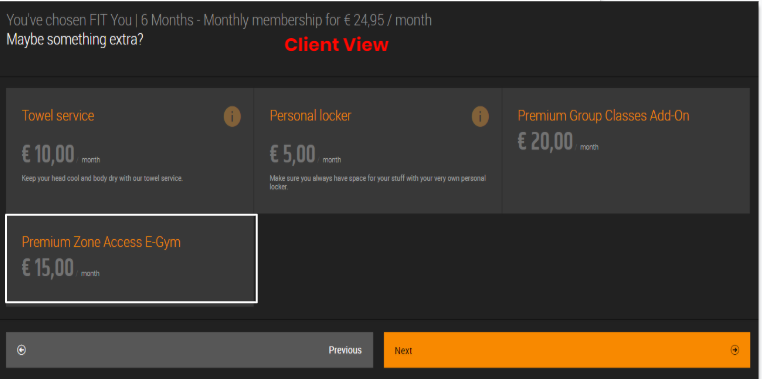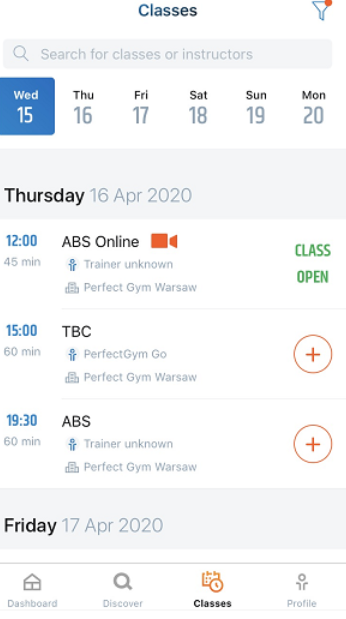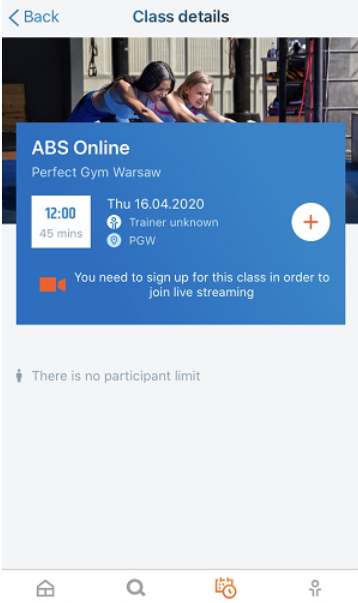As an active gym attendee and weight lifter, I can personally verify the massive impact that gym closures have had on my own fitness habits.
I experienced the common cycle of “no gym” emotions: panic I could not access a squat rack, mounting fear I would lose all my progress (gains), and disbelief that any at-home or online fitness video could actually be a suitable workout.
After about a week of wishful hoping that my gym would magically re-open, I caved and tried out a series of recommended exercise routines on Youtube and Instagram.
I transformed water jugs into dumbbells and hair accessories into resistance bands. I tried new styles of fitness I never have before: pilates, body weight circuit training, tabata, and so on.
To my surprise, I loved them.
Like me and so many others, this period has inevitably forced me to step outside my fitness comfort zone, both in styles of fitness and in realizing that I do not necessarily need to go to the gym to have a great work out.
In relation to my own “fitness awakening”, gyms need to recognize that offering strong online resources will be a lasting aspect of their business models far after social distancing measures end. Gyms will be entering a new era of business that will require them to offer digital services and omnichannel approaches to wellness for their members.
Fitness facilities need to start thinking now about their long-term digital strategy. Not only do they need to invest in expanding and improving their own digital options, but they also need to plan how to monetize them.
This article will discuss:
- The new reality facing gyms and facilities when they do re-open
- Factors gyms should consider for pricing remote options
- Different pricing strategies
- Current industry benchmarks for monetizing digital services
A New Fitness Facility Frontier
When gyms and facilities do begin to re-open, they will undoubtedly be faced with a new fitness landscape. These new conditions will be shaped by:
- New government regulations
- New consumer preferences
- New industry expectations
After social distancing, gyms will be among the most affected industries by new government policies. Additionally, no one can confidently predict how long these policies will be in place.
Gyms will need to comply with new strict crowd and space utilization protocols instead of freely welcoming members into crowded spaces. New vigorous sanitation standards will also impact your flow of business.

Classes will have strict capacity maximums. Especially within the boutique segment, which typically have smaller gym spaces and rely off the pay-per-class model, restricting class attendance can be devastating to pricing models.
Therefore, just to comply with unprecedented capacity rules, offering varied online options will be crucial to getting your business back on track.
On the consumer side, many once loyal members may be considering gym alternatives. Many consumers are facing financial hardships and may not be able to afford the same fitness expenses.
Additionally, many members who never gave online or at-home training a fair try may be tempted to keep their new lower cost training routines. In fact, many members reported at-home workouts encouraged them to try new classes or work out styles they would not in person.

By providing digital options consumers have grown accustomed to, you will advantage your business for both member retention and appealing to new customers.
In terms of industry standards, this period has revealed the dire need for gyms to be able to still offer value to their members even if they physically cannot come to their facilities.
Fitness industry leaders around the world have recognized that they need to have their own branded digital services, whether they be livestream classes, online follow-along videos, or remote personal training.
This will have a ripple effect on the entire fitness facility industry: if you do not offer any degree of digital services, consumers will opt for gyms that do.
Factors to Shape Your Monetization Strategy

Investing in your gym’s online offerings brings more value than strictly additional revenue.
They will provide an opportunity for further branding by creating resources that reflect comparable levels of your service. They bring client-centric convenience to the center of your business model and show tangible methods of providing extra value to your members.
Use this time wisely to both build your digital services and monitor client responses.
Your clientele’s response to these services will be imperative data in formulating a pricing strategy as your facility reopens. Qualitative reporting data like click rates and page time views metrics can be used through different website analytic tools to collect client engagement data.

For constructed feedback, your gym should prioritize sending out/analyzing customer feedback surveys and class/instructor reviews. Not only can this feedback help you optimize your services, but they will show raw engagement metrics that can help you establish pricing down the line.
The more engagement and positive feedback you receive now, the more likely you will be able to set your digital services at a higher add-on cost. You can also use this as a base for your club to invest in improving your digital platform and options moving forward.
If your services are lacking interaction, including them in your membership fees will be the smartest opening approach. While they are complimentary, your members will have no reason to not sample and ultimately utilize them regularly if they enjoy the content.
Pricing Options
Include Digital Platform in Base Membership Fees
Most digital services are completely new to many gyms that created them during their forced closures of social distancing. Therefore, continuing to build this platform and give access to it to all members could be the best strategy.

Providing these services for free can also be a strong tactic for showing your customers your commitment to helping them reach their fitness goals, inside your club or from home.
Considering that your gym will likely have to strictly monitor capacity levels in the coming months, providing digital services free of charge is an excellent way to keep members active and engaged with your services.
If your digital offerings have not reached a reputable level of sophistication or client engagement yet, this option will be the most beneficial for your club. This also can be your initial plan as you develop your digital platform over time until its quality warrants an additional cost.
Additionally, including digital services in your membership fee can provide justification for slightly raising the base price.
Affordable Add-on Option
Since your digital services are still new and should be used in tandem with your members’ experience at your gym, pricing them as a low-cost add-on could be a great additional revenue channel.

A survey of business owners discussed at a recent online FIT SUMMIT webinar suggested that digital add-on options are the most popular options gym owners were considering upon reopening.
Consider that your members may have grown accustomed to at-home workouts and will continue to want to incorporate them into their regular exercise schedule. They also will now be more familiar with other free online options they have likely been using.
Pricing should be low enough as to not scare off members from pursuing them, probably between 5-10% of your membership fees. However, this small cost also should guarantee that your services provide an option other free resources do not, like quality online workouts with your instructors they know and trust or live streaming classes from your facility.
Pricing them as an add-on purchase will push your business to raise the bar to improve your digital platform to ensure that your members are getting what they pay for. Your club can generate additional monthly revenue at any time with flexibility to add to contracts whenever.
Additionally, the add-on option could be a great sales tactic. You can provide your digital services for free for a specified period (1-3 months) when your member signs their contract, before paying. This will give members ample time to use your digital platform and find value in it.
With recurring payment procedures, the add-on payment will seamlessly transition into your members’ monthly membership dues. This increases the likelihood that they will continue to use your digital services at a slightly higher cost.
Remote Membership Option

Creating a completely remote membership option can provide a powerful alternative to member churn. Oftentimes, members are forced to discontinue or freeze their membership for personal reasons (long-term travel, injury, etc) that stop them from physically going to your facility.
Completely remote membership option can help you retain clients who want to freeze their memberships or cancel altogether if they move or relocate. This low-cost option allows you to maintain some degree of relationship and revenue from a member who you would otherwise lose contact with.

Additionally, remote memberships have the opportunity to double as revenue drivers. Once you have established rapport for digital or livestream services, can expand marketing to new member acquisition for customers who are not comfortable going to the gym.
Average costs for remote memberships should match the quality of your offerings, but can be estimated around ⅓ of your monthly membership fee.
Live Stream Membership Costs

For clubs with live stream capabilities, especially within the Boutique segment, club owners should consider the viability of a remote streaming membership. Especially considering the impact that Boutique clubs are bound to suffer with post COVID capacity management, live streaming could become essential to their business revenues.
Pricing for live stream only membership will depend on your classes reliability on equipment. As a base consideration, studios should consider the price point of their live stream classes to fall between ⅓ to ½ of their regular costs.
Remote Private Training

Source
If your club had success offering remote private training sessions during this period, you should consider continuing them. With capacity management procedures in mind, they can be an excellent resource to maintain private training appointments and revenue.
Currently, typical pricing for remote personal training comes to roughly 50% of what you would offer at your facility. This obviously accounts for less equipment and resources available to your members.
The trainer must be the difference maker to warrant this price in how they can make your client feel like they are getting the most out of the private training experience.
To promote remote personal training, consider sampling options like free or significantly discounted first sessions. This will allow your member to assess this option who otherwise may not consider them.
Closing Thoughts
Without question, the gym industry will be in uncharted territory as it reignites after social distance measures. This new landscape will force gyms and fitness brands to be as innovative as ever to get their business back on track. A major element of this will continue to be how fitness clubs grow their online resources and platform.
As fitness facilities will continue to merge into the digital sphere, establishing the most effective strategy to monetize them or your specific club will be essential to your new business model.















